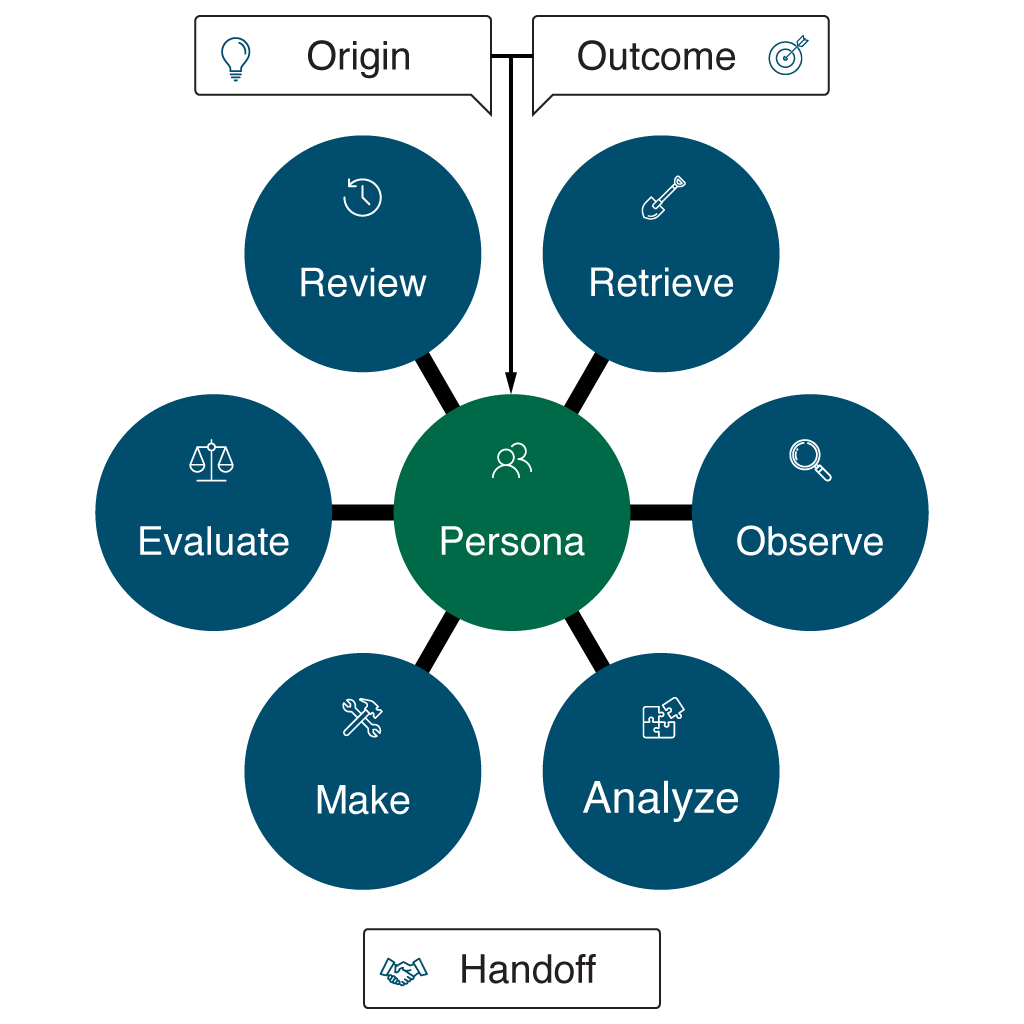Model Structure & Orientation

The ROAMER Model is structured to support clarity, repeatability, and consistent application across different types of work. It is designed to foster alignment and enable effective collaboration—especially across teams, functions, and stakeholder groups with diverse interests.
Structure
- Three stages: Before, During, After
- Ten phases: Sequential, but adaptable—supporting alignment and shared understanding at every step. Use as much or as little of the model as fits your work’s complexity.
Orientation to Use
- Entry Point: Begin with the “Before” phases to establish purpose, scope, and to map the full stakeholder ecosystem. The ROAMER Model encourages early alignment and transparency so everyone shares a common foundation.
- Progression: Move through the “During” phases as you execute and build. Each phase intentionally prompts engagement, evidence-gathering, and shared sense-making, so that every group remains included and informed as the work develops.
- Transition: Conclude with the “After” phases to capture lessons learned, reinforce cross-group learning, and hand off deliverables with clarity and context—setting up the next owner or delivery team for success.
- Adaptability: The ROAMER Model flexes to fit various altitudes and environments—use all phases for complex, cross-functional
initiatives, or focus on core phases for smaller or more urgent efforts. Always prioritize phases that support stakeholder engagement and mutual understanding.
Quick Reference Table
| Stage | Phase | Core Purpose |
|---|---|---|
| Before | Origin | Define starting point and stakeholder ecosystem |
| Outcome | Set shared goals and measures of success | |
| Persona | Clarify users/beneficiaries, and build common understanding | |
| During | Retrieve | Gather all relevant existing knowledge, inviting cross-group input |
| Observe | Collect new data/insights with transparency and inclusivity | |
| Analyze | Synthesize information and define the real problem collaboratively | |
| Make | Build/implement solutions with input from all relevant voices | |
| Evaluate | Test, measure, and validate outcomes—share findings openly | |
| After | Review | Reflect together—capture lessons and drive collective improvement |
| Handoff | Deliver and document with clarity for next owner/team |
When to Use Each Part of the Model
- Use the full ROAMER Model for major initiatives, projects, releases, or features—especially where alignment and cross-functional coordination are critical.
- For smaller work where insights and personas are already available and when speed is critical, focus on the core phases: Origin, Outcome, Make, Evaluate, and Handoff.
- The ROAMER Model is not intended for trivial or highly repetitive tasks—use only what adds value, but always prioritize the phases that enable clarity, shared understanding, and stakeholder engagement.
Refer to the navigation for a detailed explanation and guidance on each phase.

